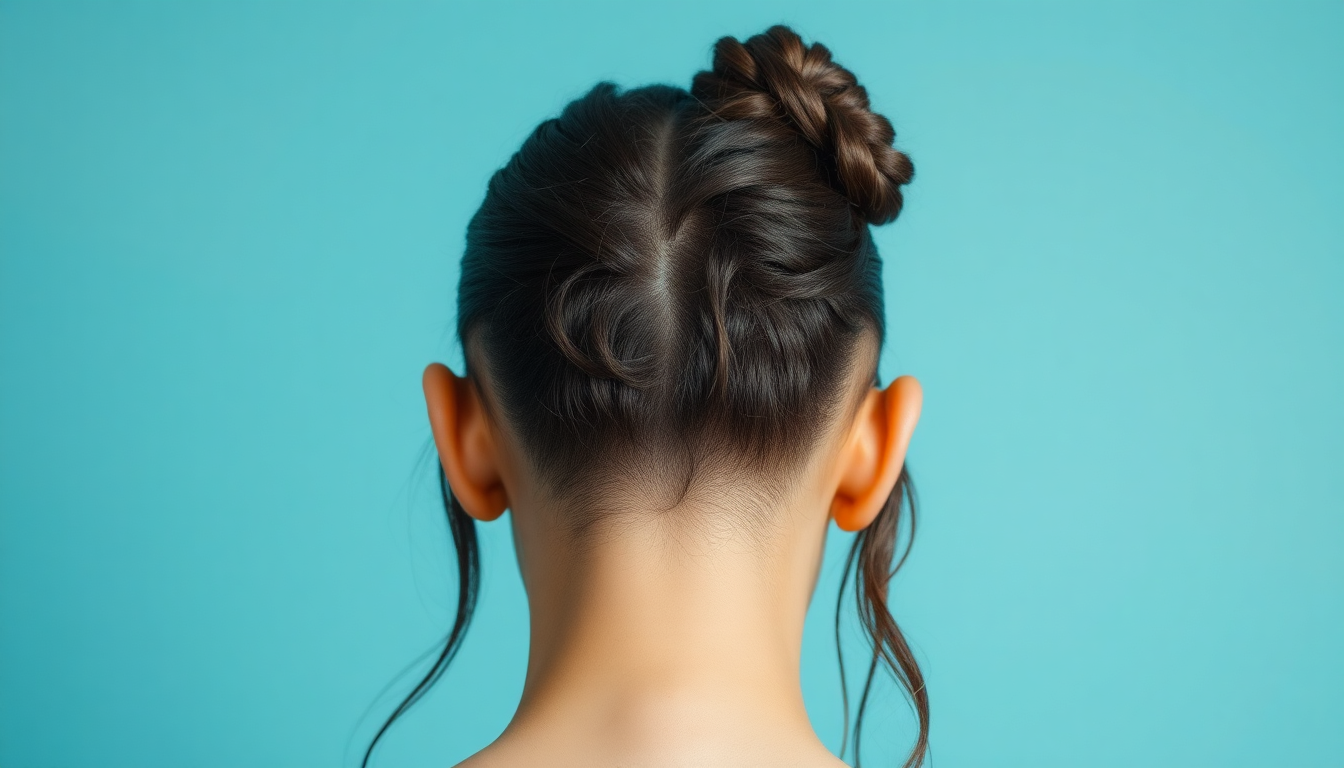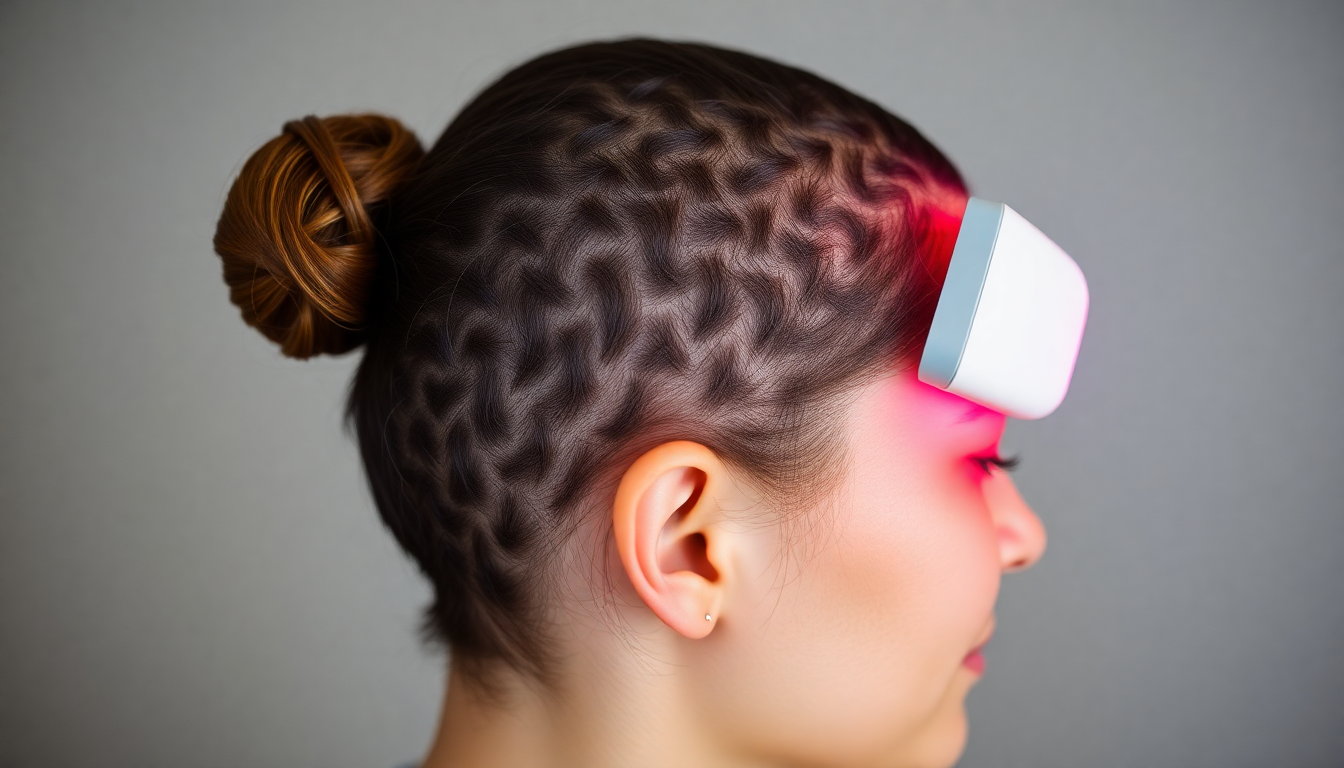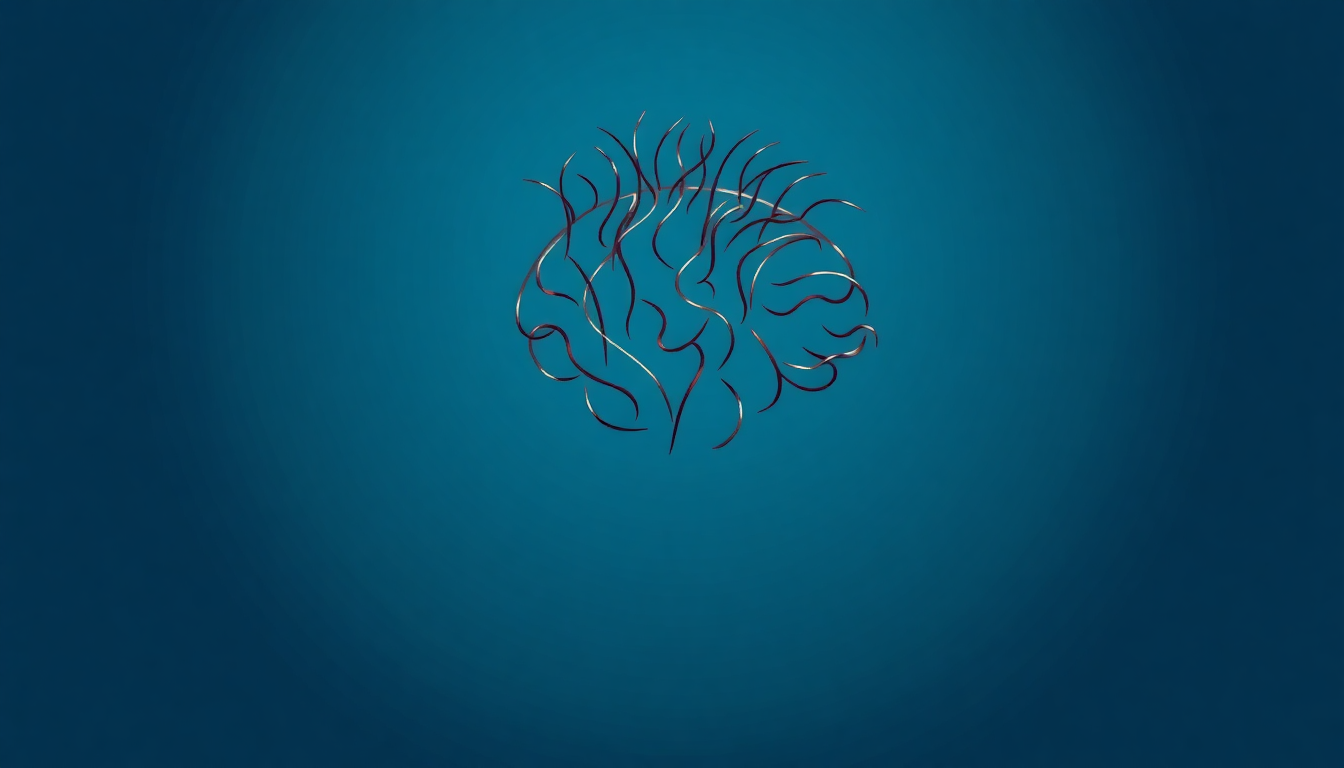Introduction — The Promise of Personalized Scalp Stacking
Scalp stacking has emerged as a thoughtful, evidence-informed approach to support hair density by combining targeted peptide serums, microbiome-friendly prebiotics, and at‑home devices (LLLT, microneedling, ultrasound). The principle is simple: optimize the scalp environment, signal follicles with restorative peptides, and use devices to enhance circulation and product uptake. But the real power comes from personalization—matching actives, textures, and device intensity to your hair type, lifestyle, and tolerance.
How This Guide Helps You
- Understand the science behind peptides, prebiotics, and devices.
- Compare stacking strategies for common hair types (fine, curly, oily, mature).
- Follow step‑by‑step routines (daily, weekly, monthly) with safe layering logic.
- Choose products and devices with practical buying criteria and SEO-friendly product anchors.
- Troubleshoot common problems and know when to see a professional.
The Science in Plain Language: Why Each Component Matters
Before layering anything, it helps to know what each element contributes:
- Peptide serums: small chains of amino acids that can act as signaling molecules. Some peptides (e.g., copper peptides like GHK‑Cu, palmitoyl peptides, and biomimetic growth factor peptides) are formulated to support extracellular matrix health, stimulate supportive cells around the follicle, and encourage an environment favorable to hair cycling.
- Prebiotics & microbiome‑friendly tonics: unlike probiotics (live microbes), prebiotics feed beneficial bacteria already on the scalp and support a balanced microbiome. A balanced microbiome can reduce inflammation, normalize sebum production, and reduce flaking that can interfere with hair growth environments.
- At‑home devices: low-level laser therapy (LLLT) is thought to stimulate mitochondrial activity and circulation; microneedling creates controlled micro-injury to stimulate repair pathways and potentially enhance topical uptake; ultrasound or iontophoresis can increase transdermal delivery. Devices can accelerate or amplify the effects of topicals when used appropriately.
General Layering Rules — Safety First
- Introduce one new product or device at a time and wait 2–6 weeks before adding another—this isolates reactions and helps you know what’s working.
- Always layer thinnest-to-thickest: sprays & tonics → water-based serums → richer serums/oils → ointments.
- Avoid combining strong exfoliants or potent actives (high‑strength acids, retinoids) immediately before or after device procedures without clinical guidance.
- Patch test new formulations 48–72 hours before first full‑scalp use.
- Document baseline photos and monthly progress with consistent lighting/angles to track density gains.
- When in doubt, simplify: one peptide + one prebiotic + conservative device schedule is preferable to aggressive stacking that causes inflammation.
Comparative Mechanisms — When to Prioritize Each Modality
- Peptides are prioritized when follicle signaling and matrix support are primary goals (classic androgenetic thinning, age‑related miniaturization).
- Prebiotics are prioritized when scalp irritation, dandruff, or seborrheic tendencies are present—reducing inflammation often yields better results than adding stronger stimulants.
- Devices are prioritized when product penetration or circulation needs boosting, or when previous topical-only approaches produced minimal change.
Detailed Protocols by Hair Type (Expanded)
Below are step-by-step, more detailed routines. These are intended as practical templates—customize based on product labels, device instructions, and personal tolerance.
1) Fine, Thinning Hair (Sensitive Scalp)
Profile: thin individual strands, visible scalp in parts, higher perception of density loss. Scalp often reacts to strong actives.
- Goals: increase hair yield per cm2, preserve fine strand volume, minimize irritation.
- Baseline routine (daily):
- AM: gentle, sulfate-free shampoo (if washing). Apply a lightweight prebiotic scalp tonic (spray) on towel-dried scalp. Wait 30–60 seconds, then apply a water-based peptide serum (2–4 drops per targeted zone). Gently massage 45–60 seconds to distribute—massage can promote circulation and enhance uptake.
- PM: if not washing, lightly mist prebiotic tonic and reapply peptide serum if recommended by product guidance. Avoid heavy leave-in oils that can weigh down fine hair.
- Device integration (conservative): LLLT comb or brush 3×/week (manufacturer guidance for duration). If you choose at‑home microneedling, keep to very short needles and low frequency; many clinicians recommend starting with 0.25–0.5 mm at extended intervals and monitoring for irritation. Always follow safe sterilization and aftercare practices.
- Weekly/Monthly: once a week use a clarifying but gentle scalp cleanse if buildup is present. Track density photos monthly.
- Expected timeline: early textural improvement and reduced shedding within 8–12 weeks for some; more noticeable density changes in 4–6 months.
2) Curly or Textured Hair (Dry Ends, Low Density)
Profile: natural curl pattern, prone to dryness on lengths, but scalp can be dry or normal. The challenge is stimulating follicles without altering curl integrity.
- Goals: support follicle health and scalp hydration while preserving curl definition.
- Baseline routine (daily):
- AM: co-wash or gentle sulfate-free shampoo. Apply a hydrating prebiotic scalp serum (lightweight, humectant-rich). Follow with a water-based peptide serum across the scalp; for curly hair, use a dropper to target parts to minimize product on lengths.
- PM: scalp massage with fingertips and peptide serum once or twice a week. On nights between device sessions, use a lightweight leave-in that won’t form a hard film on curls.
- Device integration: LLLT helmet or cap is often the most curl‑friendly option. Microneedling can be used cautiously with shorter needles; always detangle gently before device sessions and consider protective styling after sessions to avoid hair breakage.
- Complementary care: deep conditioning for lengths weekly; avoid heavy oils on the scalp more than twice per week to prevent pore clogging.
3) Oily Scalp or Seborrheic Tendencies
Profile: visible oil sheen, frequent washing needed, flaking or itch may be present.
- Goals: normalize sebum, reduce inflammation, support follicle function without adding occlusive products.
- Baseline routine (daily):
- AM: clarifying or balancing shampoo (1–3×/week depending on oiliness). Use a water-based prebiotic spray to support beneficial microflora. Apply a non-comedogenic peptide serum to the scalp—look for gel or water formulations that dry quickly.
- PM: light mist of prebiotic tonic if needed; heavier leave-in products applied only to mid-lengths and ends, not to scalp.
- Device integration: LLLT comb 3×/week is well tolerated; avoid oils immediately after device sessions. If microneedling is considered, seek pro guidance—active seborrheic dermatitis or inflamed areas are not appropriate for needling.
- Supportive measures: avoid silicone-heavy silicones on the scalp; consider targeted antifungal shampoos intermittently if diagnosed with Malassezia-related dandruff by a clinician.
4) Mature Scalp (Age-Related Thinning)
Profile: slower hair growth cycle, reduced follicular density, possible scalp dryness or thinning across the crown.
- Goals: stimulate cellular function, improve scalp circulation and barrier, reduce inflammation.
- Baseline routine (daily):
- AM: antioxidant-rich prebiotic serum (niacinamide blends well with peptides for barrier support). Apply a peptide serum formulated for aging scalps—look for combinations with niacinamide, panthenol, or botanical anti-inflammatories.
- PM: richer peptide treatment at night if tolerated; consider occlusive treatments on the scalp sparingly to boost overnight absorption where appropriate.
- Device integration: regular LLLT (3–5×/week) and clinician-guided microneedling (if appropriate) can be beneficial. Discuss combining topical peptides with device sessions with a professional to optimize timing and avoid unnecessary irritation.
- Adjuncts: consider scalp massage techniques and circulation-promoting habits (moderate exercise, stress reduction)—lifestyle impacts hair health.
Choosing Peptide Serums: Ingredient Checklist
Not all peptides are created equal. Use this checklist when evaluating peptide serums:
- Listed peptide types: GHK‑Cu (copper peptide), palmitoyl tripeptide/hexapeptide variants, acetyl tetrapeptide—these are commonly used in hair formulations.
- Complementary ingredients: humectants (glycerin, propanediol), soothing agents (niacinamide, panthenol), antioxidants (vitamin E, ascorbyl derivatives).
- Avoid: high concentrations of alcohol, strong acids (>2% AHA) in the same product as peptides—formulas may inactivate delicate peptides or increase sensitivity.
- pH and stability: peptides are typically formulated in pH-stable ranges—brands that publish stability data or clinical trials are preferable.
- Clinical transparency: brands that share concentrations (or clinical trial data) are often more reliable than those that hide percentages behind vague marketing claims.
Choosing Prebiotic Scalp Treatments: What to Look For
- Key ingredients: inulin, fructooligosaccharides (FOS), lactobacillus-derived postbiotics—these support a balanced scalp microbiome.
- Texture: light sprays or serums are easiest to incorporate; avoid heavy oils on oily scalps.
- Claims vs. evidence: look for microbiome studies or third‑party testing where possible. Brands that describe the mechanism (feed beneficial bacteria to reduce inflammation) are preferable.
At‑Home Devices: Selection and Integration
- LLLT (Low-Level Laser Therapy): useful for many hair types; select devices with published power output and follow manufacturer instructions. Benefits accrue gradually—consistency matters.
- Microneedling: can improve topical uptake and stimulate repair, but requires careful sterilization, appropriate needle selection, and conservative frequency. If you have active scalp disease or are on blood thinners, avoid at-home needling and consult a clinician.
- Ultrasound & iontophoresis: typically adjuncts for enhancing delivery; follow device guidance closely and avoid use over open wounds.
- Device hygiene: clean heads/brushes per instructions, replace consumables on schedule, and never share device heads to reduce infection risk.
Practical Weekly and Monthly Templates
Use these templates as starting points and adapt based on product guidance and tolerance.
-
Conservative Starter (for sensitive or new users):
- Daily: prebiotic spray AM, peptide serum PM (alternate nights).
- Weekly: 1 gentle scalp massage session with peptide application.
- Devices: LLLT 2–3×/week; no microneedling for first 3 months.
-
Standard Routine (balanced approach):
- Daily: prebiotic AM, peptide AM and PM.
- Weekly: targeted scalp massage 2×; clarifying shampoo once/week if needed.
- Devices: LLLT 3–5×/week; microneedling 0.25–0.5 mm once every 4–6 weeks if tolerated (discuss with clinician first).
-
Advanced (experienced users under guidance):
- Daily: multi‑ingredient peptide blends, prebiotic tonics as needed.
- Weekly: cycle in deeper device sessions, follow with calming peptide serums and barrier-repair ingredients.
- Devices: more frequent LLLT; microneedling schedules and depths should be clinician-approved.
Troubleshooting — What to Do If Things Don’t Go as Planned
- Redness or burning: stop new products, simplify to a soothing prebiotic + barrier-support peptide, and allow 1–2 weeks for recovery. If severe, seek medical attention.
- Increased shedding initially: some shedding can occur with new stimulatory routines—track over 8–12 weeks; if shedding persists or worsens, pause the regimen and consult a clinician.
- Pustules or infection signs: discontinue topical treatments and device use; consult a healthcare provider urgently.
- No visible improvement after 6 months: review adherence, product selection, and consider professional assessment (bloodwork for thyroid, iron, ferritin, hormonal panels where indicated).
Real-World Case Studies (Illustrative)
These anonymized mini-cases demonstrate how personalization matters.
- Case A — Late 20s, fine hair, post-partum shedding: switched to a gentle peptide serum + prebiotic spray twice daily; added LLLT 3×/week. Reduction in shedding within 8 weeks, improved density by 6 months.
- Case B — Mid 40s, curly hair, diffuse thinning: focused on hydrating peptide formulations and a weekly LLLT helmet. Avoided heavy scalp oils; maintained curl integrity and noted better root lift and fullness at 5 months.
- Case C — Early 50s, oily scalp, miniaturization: combined oil‑free peptide gels with microbiome-balanced tonics and targeted clarifying shampoo 1×/week; added LLLT comb. Scalp look normalized and hairs per cm2 stabilized over the year.
How to Assess Product Claims and Choose a Brand
- Look for transparency: ingredient lists, concentrations, stability data, and any published trials.
- Check for independent reviews and clinician endorsements—but scrutinize the quality of the studies.
- Prefer multi-product brands that design peptide + prebiotic pairings—compatibility reduces layering errors.
- SEO tip: when searching, use terms like "peptide hair serum" and "prebiotic scalp treatment" to find relevant, targeted products and educational pages.
Recommended Starting Products and Where to Begin
If you prefer curated, ready-to-stack options, consider brands that offer complementary peptide serums and prebiotic tonics formulated to be layered. For a practical starting point, check targeted ranges like the peptide hair serum and prebiotic scalp treatment collections at Eelhoe Cosmetics. Eelhoe provides options tailored to thinning hair, oily scalps, and mature scalps—use product pages labeled "peptide hair serum" and "prebiotic scalp treatment" for quick discovery.
Advanced Tips for Maximizing Density Gains
- Combine scalp massage with topical application to boost circulation and product distribution.
- Rotate complementary peptides over months rather than using numerous peptides at once—this reduces the risk of irritation and allows you to measure benefits.
- Use a consistent device schedule—consistency often matters more than intensity.
- Prioritize sleep, nutrition, and stress management—these lifestyle factors modulate the hair growth cycle significantly.
- For persistent or medically complex hair loss, integrate clinical therapies (oral or topical prescription options) under a clinician’s supervision with adjunctive stacking for supportive benefits.
SEO & Shopping Tips — Keywords and Phrases to Use
When researching products or creating content, use targeted phrases for best search relevance:
- peptide hair serum
- prebiotic scalp treatment
- scalp stacking routine
- LLLT for hair density
- best serums for thinning hair
Brands that optimize product pages and education pieces for these keywords improve discoverability—and if you want curated, compatible options, explore the "hair density products" and "peptide serum" sections at Eelhoe Cosmetics.
When to See a Dermatologist or Trichologist
- If you have sudden or patchy hair loss, scale‑forming scalp disease, or signs of infection, seek a professional promptly.
- A clinician can also assess for systemic contributors (thyroid disease, iron deficiency, hormonal imbalances) and recommend prescription therapies if indicated.
- If considering stronger device protocols or combining devices with prescription topicals, ask a dermatologist for a supervised plan.
Long-Term Mindset: Patience, Consistency, and Data
Hair density gains are gradual. Most topical/device combinations produce incremental improvements over months. The most reliable routines prioritize safety, consistent application, and data-driven decision-making (photos, notes on irritation, and adherence tracking). If you commit to a stepped routine and refine it based on tolerance and results, you increase the chance of sustained, meaningful gains.
Final Thoughts and Where to Start Today
Personalized scalp stacking offers a nuanced way to approach hair density that respects individual hair type, scalp condition, and tolerance. Begin with one high-quality peptide serum and a complementary prebiotic scalp tonic, document your baseline, and add devices conservatively. If you prefer a curated product pairing to start immediately, explore peptide serums and prebiotic scalp treatments optimized for layering at Eelhoe Cosmetics. Their collections include lightweight "peptide hair serum" formulas and microbiome-balancing "prebiotic scalp treatment" options designed to pair with at‑home devices.
Ready to build your stack? Visit Eelhoe Cosmetics - hair density products to view starter kits and single items that can speed the process of creating a safe, stepwise scalp stacking routine. Purchase, follow a conservative protocol, and track monthly photos to measure your density gains.
Disclaimer: This article is informational and not a substitute for medical advice. For personalized medical guidance, especially if you have a history of scalp disease, are on systemic medications, or have complex hair loss, consult a dermatologist or licensed trichologist before starting new device or topical regimens.




Palikti komentarą
Prieš paskelbiant visi komentarai moderuojami.
Ši svetainė apsaugota „hCaptcha“, taip pat taikoma „hCaptcha“ privatumo politika ir paslaugos teikimo sąlygos.